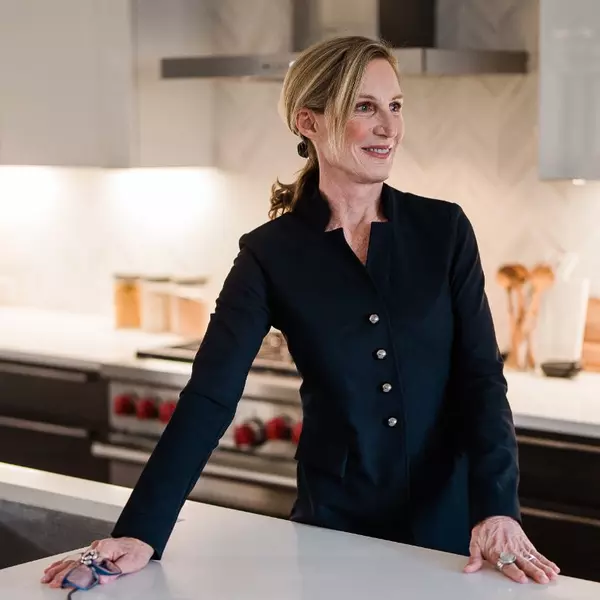10 Easy Pieces: Architects’ Favorite Of-the-Moment Green Paint Picks
Noticed recently: a distinctive spectrum of green emerging in the latest interior spaces. This unexpected hue, a chic, deep pistachio shade, has become a favorite among architects and designer both stateside and abroad. Here, we profile the variants and explore what makes this unconventional green so compelling.
 Above: Danish architects Mentze Ottenstein designed the kitchen of the Dinesen country house with Aqualinum paint from Linolie & Pigment in shade Fangussi/8.
Above: Danish architects Mentze Ottenstein designed the kitchen of the Dinesen country house with Aqualinum paint from Linolie & Pigment in shade Fangussi/8.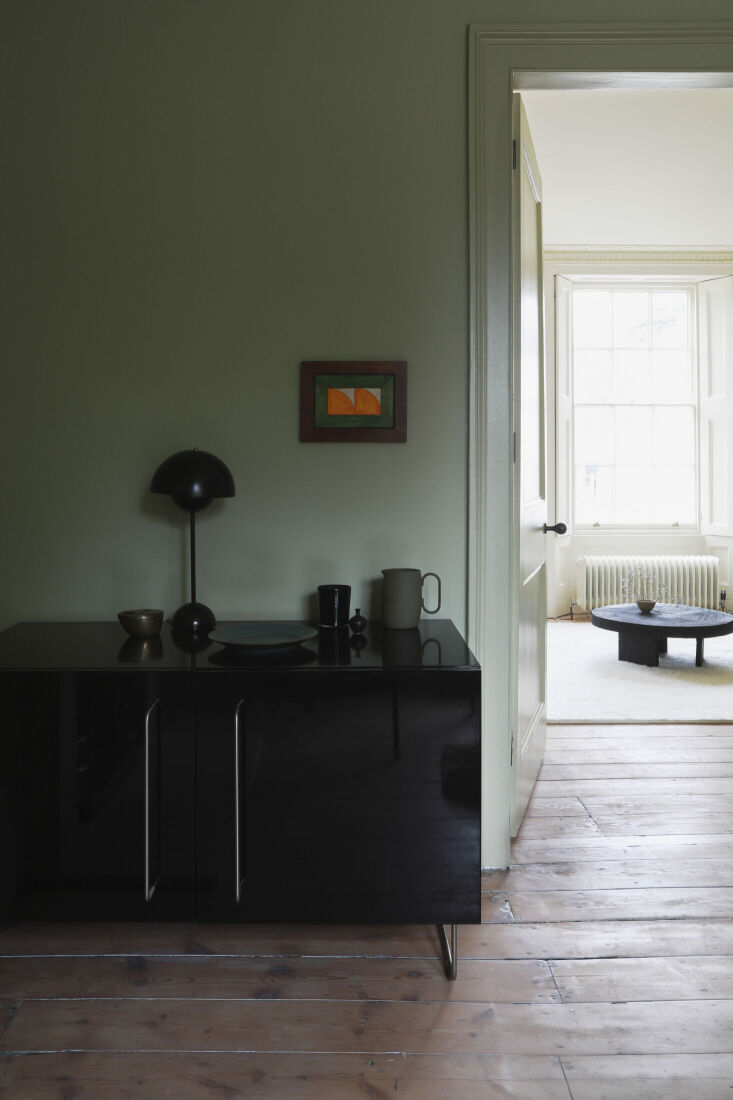 Above: London-based designer Jill McNair applied Farrow & Ball’s Cooking Apple Green No. 32 to the walls in her own home office. Photograph from Italianate Modern in Full Color: Interior Design Jill MacNair’s Own Renovation in London.
Above: London-based designer Jill McNair applied Farrow & Ball’s Cooking Apple Green No. 32 to the walls in her own home office. Photograph from Italianate Modern in Full Color: Interior Design Jill MacNair’s Own Renovation in London.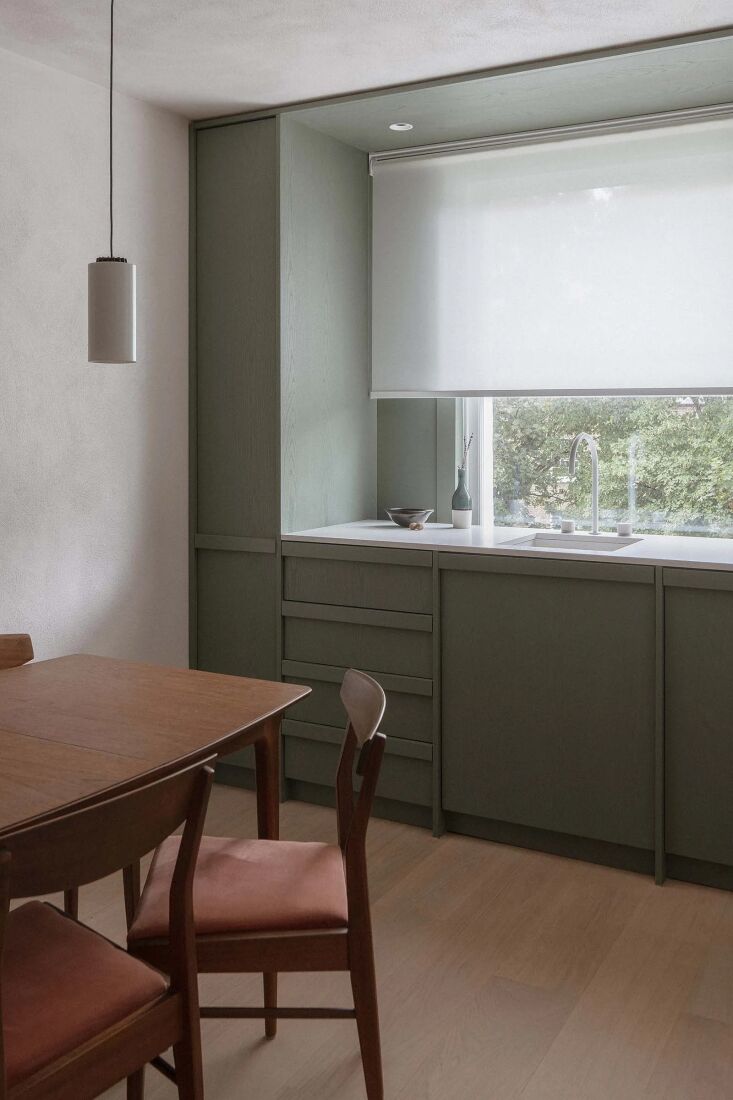 Above: In the kitchen of Highbury Flat by Architecture for London, plywood and ash veneer kitchen cabinets were finished with 2 coats of Rubio WoodCream in Forest Green. Photography by Titas Grikevičius for Architecture for London.
Above: In the kitchen of Highbury Flat by Architecture for London, plywood and ash veneer kitchen cabinets were finished with 2 coats of Rubio WoodCream in Forest Green. Photography by Titas Grikevičius for Architecture for London.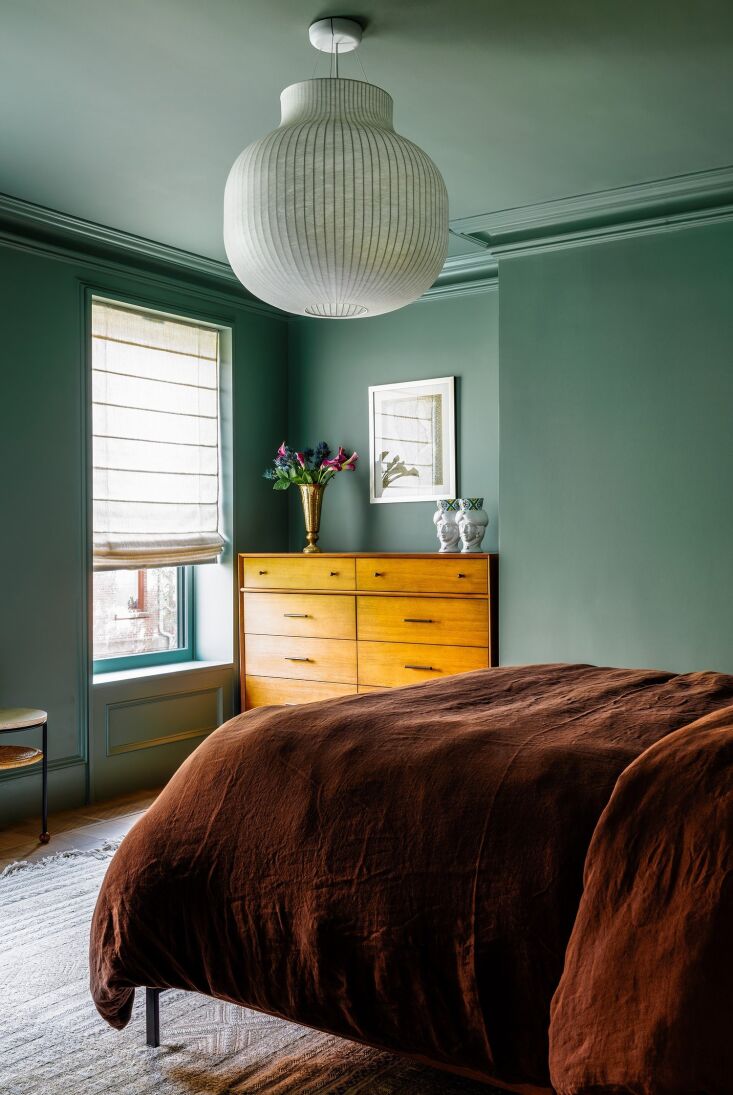 Above: In the guest bedroom of a Cobble Hill townhouse by Shapeless Studio, the designers chose Farrow & Ball’s Castle Gray No. 092 “for it’s cool, muted tone; a blue-green that feels both grounded and airy,” explains architect Andrea Fisk. “It’s a shade that invites calm without feeling cold, and playful without tipping into the overly sweet or juvenile.”
Above: In the guest bedroom of a Cobble Hill townhouse by Shapeless Studio, the designers chose Farrow & Ball’s Castle Gray No. 092 “for it’s cool, muted tone; a blue-green that feels both grounded and airy,” explains architect Andrea Fisk. “It’s a shade that invites calm without feeling cold, and playful without tipping into the overly sweet or juvenile.”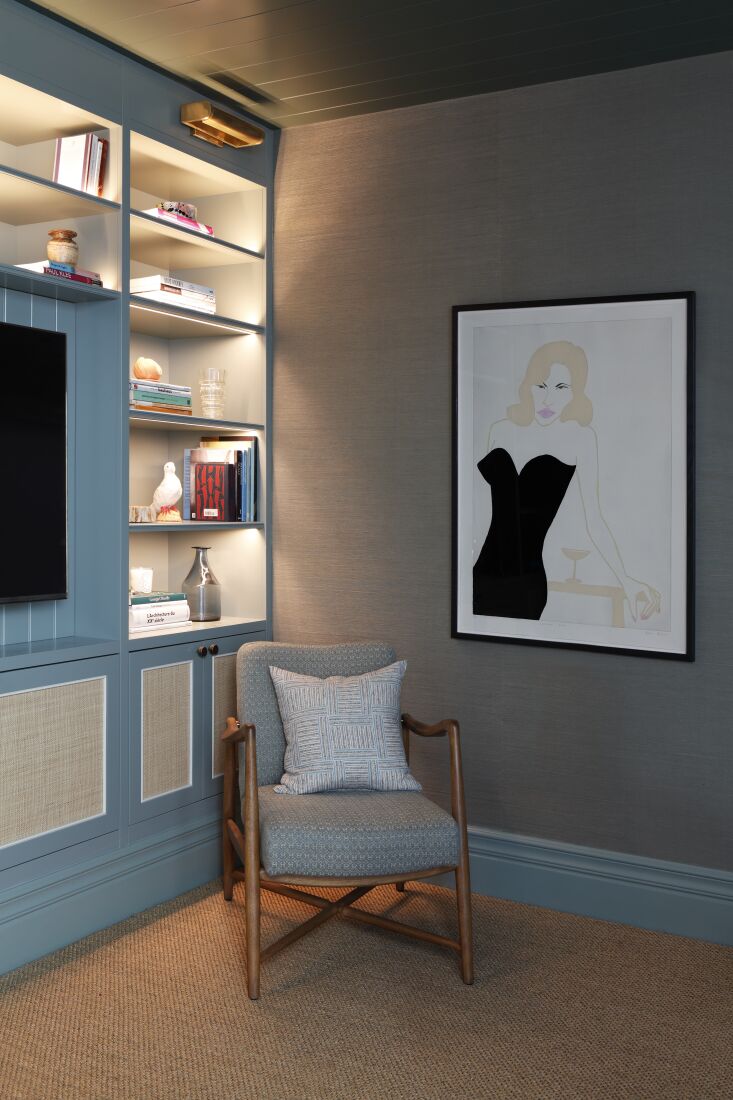 Above: French interior architect and designer Astrid Houssin favors green, overall, and integrated both Little Greene’s Windmill Lane 296 (walls) and Ho Ho Green (ceiling) in a project in Fulham, England.
Above: French interior architect and designer Astrid Houssin favors green, overall, and integrated both Little Greene’s Windmill Lane 296 (walls) and Ho Ho Green (ceiling) in a project in Fulham, England. Above: Nickey Kehoe opted to coat the living space in a New York City loft with Benjamin Moore’s Feather Green 625. Photograph by Haris Kenjar for Nickey Kehoe.
Above: Nickey Kehoe opted to coat the living space in a New York City loft with Benjamin Moore’s Feather Green 625. Photograph by Haris Kenjar for Nickey Kehoe.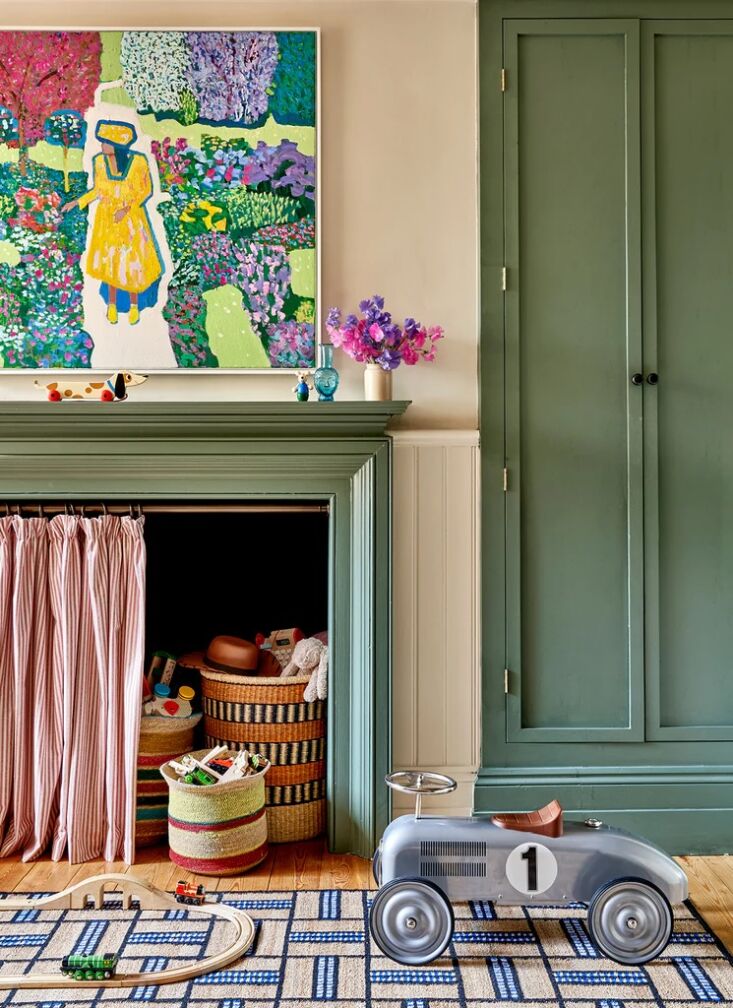 Above: Designer Lonika Chande used Farrow & Ball’s Breakfast Room Green on the trim and joinery in a Hackney bedroom. “It’s energetic and vibrant without being overpowering,” she describes. “The neutral walls knock it back. I love the character that painted woodwork brings, particularly to period projects.” Photograph by Milo Brown for Lonika Chande.
Above: Designer Lonika Chande used Farrow & Ball’s Breakfast Room Green on the trim and joinery in a Hackney bedroom. “It’s energetic and vibrant without being overpowering,” she describes. “The neutral walls knock it back. I love the character that painted woodwork brings, particularly to period projects.” Photograph by Milo Brown for Lonika Chande.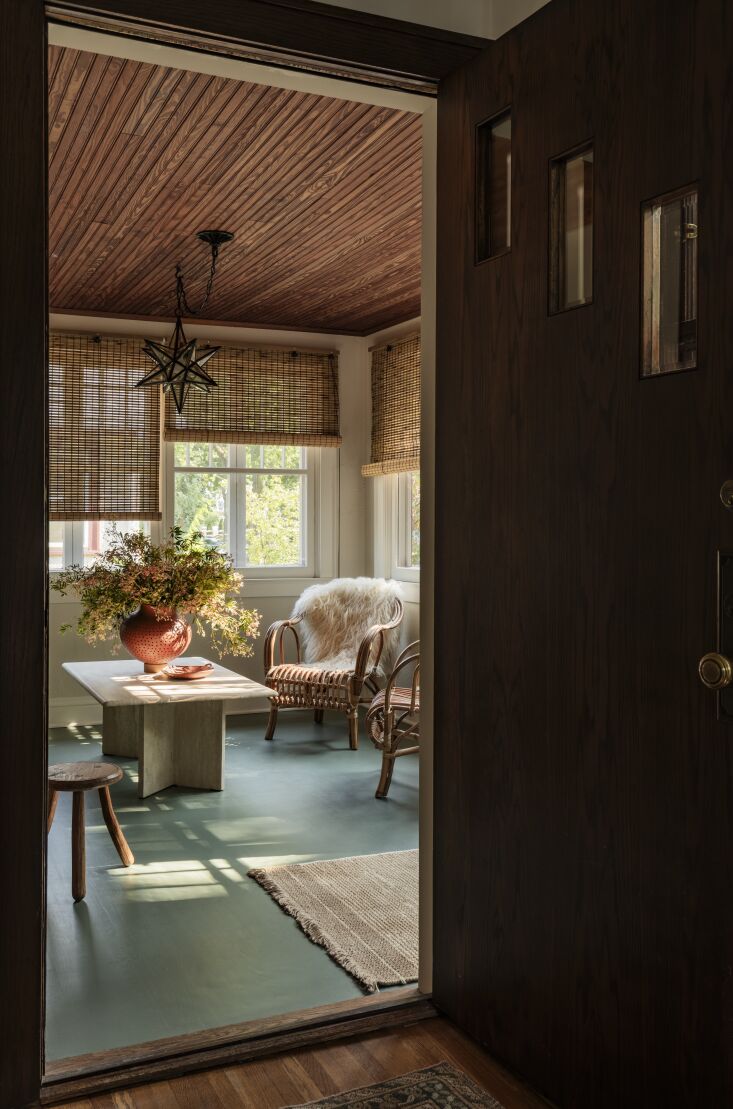 Above: Painted floors transform the indoor porch of a 1920s Minneapolis Craftsman by designer designer Anne McDonald who used Farrow & Ball’s Green Smoke for the project.
Above: Painted floors transform the indoor porch of a 1920s Minneapolis Craftsman by designer designer Anne McDonald who used Farrow & Ball’s Green Smoke for the project. Above: In a project by Daab Design, co-founding architect Anaïs Blehaut opted for Farrow & Ball’s Bancha No. 298. “Contrary to misconceptions, this dark color works wonderfully in a north-lit or indirectly-lit lower ground floor,” she explains. “These shades are often associated with magic and a connection to the unseen—adding magic to any space!” Photograph by Jim Stephenson for Daab Design.
Above: In a project by Daab Design, co-founding architect Anaïs Blehaut opted for Farrow & Ball’s Bancha No. 298. “Contrary to misconceptions, this dark color works wonderfully in a north-lit or indirectly-lit lower ground floor,” she explains. “These shades are often associated with magic and a connection to the unseen—adding magic to any space!” Photograph by Jim Stephenson for Daab Design.For more favorite paint colors of architects and designers, see our posts:
- 10 Paint Colors with Cult Followings: Architects’ All-Time Favorite Paint Picks
- 10 Easy Pieces: Architects’ Favorite Jade and Celadon Green Paint Picks
- 10 Easy Pieces: Architects’ Favorite Yellow Paint Picks
- 10 Easy Pieces: Architects’ Favorite Butter Yellow Paint Picks
- 10 Easy Pieces: Architects’ Favorite Red Paint Picks
Categories
Recent Posts

The Savvy Shopper’s Guide: 24 Design Sales and Offers for Black Friday
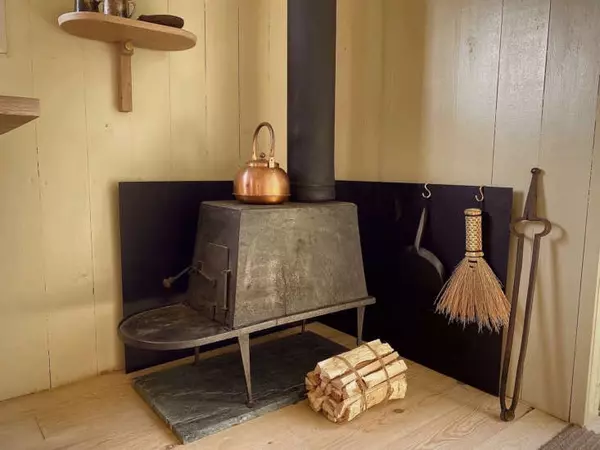
Current Obsessions: Gathering

Mikkelsen’s Pastry Shop is a Sweet Success Story

Chef Vincenzo Betulia Unveils Tulia Italian Steak

Where to Dine on Thanksgiving in Naples

In the Mood for Layers: A Brooklyn Home That Connects East and West

The Editors’ Cut: 11 Old-Timey Kitchen Tools for Hosting Season

High Road: 2025 Aston Martin Vantage

Kitchen of the Week: An Expensive-Looking Remodel for Just $13,000

Pastry Week: Lighting Inspired by Baking, Courtesy of Berdoulat x Feldspar
GET MORE INFORMATION
